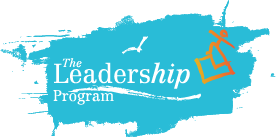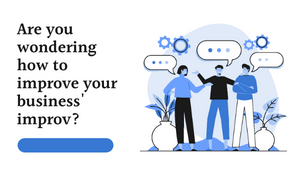About 44% of small businesses provide employees with classroom-style training. Improvisation is the best way to make the most of these sessions because it provides you with many different ideas to consider. It also gets each team member involved so that training, meetings, courses, and seminars are effective for everyone.
But how do you use improv techniques to boost your business? How can you use it as a corporate team-building activity?
Whether you're ready to build a strong business together or want to leave stress behind by letting go, then keep reading the top techniques that business schools recommend.
The Neuroscience of Improvisation
Before you can implement improv rules in your corporate training or leadership development, it's important that you understand the science behind improvisation.
Charles Limb, a musician and researcher, performed a study on the brain's functionality during musical improv. Jazz musicians were put into MRI machines as they played freestyle and improvised so that Limb and his team could watch their brain function.
He found that the parts of their brain associated with self-expression were highly active during improvisation. He also found that another part of their brain that was associated with inhibition functioned less as they improvised.
Ultimately, this shows that people who are improvising are:
- Less inhibited
- More willing to make mistakes than others who have planned their speeches
- Welcoming of new impulses that they would usually shut down
Understanding these facts can help you to become more comfortable with improvisation techniques. More endorphins and oxygen are released into the brain. This provides improvisers with more energy and ideas as well as all-around drive.
Basically, you can use improv to get the dopamine pumping!
The #1 Rule of Improv: A Team-Building Must-Follow
The #1 rule of improvisation is to learn the phrase "yes, and..."
While many people may want to counter against things that another team member says with "yes, but," this does not put people in a positive team-building mindset. Switching that "but" to an "and" validates an idea prior to disagreement. You may not agree, but you are willing to build on it by postponing judgment.
Let's look at an example of what this may look like in practice.
- Person 1: "The new software isn't working. We need an update."
- Person 2: "Yes, and I have no idea how to install one."
- Person 3: "Yes, and I know someone who does: Person 4."
- Person 4: "Yes, and I need professional tools from Duke University to install it."
- Person 5: "Yes, and we don't have access to those tools."
- Person 4: "Yes, and maybe support does."
- Person 6: "Yes, and support is off today and will be back tomorrow."
- Person 4: "Yes, and I will ask them to solve the issue then."
As you can see, all of these ideas build off each other and take a complaint to a conclusion.
Consider the Power of When
Mornings are generally the best time of day for creating lists and accomplishing tasks. This includes coming up with goals and action plans so that you can get everything important done that day. In short, mornings are for getting organized and getting down to business.
Afternoons are generally a better time for brainstorming and taking stock of ideas. Your circadian rhythm makes this the best time to think about your vision and discuss it with colleagues. As a result, it's the best time for meetings in which you implement improv strategies.
To get the most out of improv for business, it's important that you work within these confines and have discussions in the afternoon. This will give you the best possible ideas to consider during your brainstorming session.
Focus on Quantity Rather Than Quality
While you may have previously heard the phrase "quality over quantity," that principle doesn't apply to improv brainstorming sessions. To improve your business' improv, you'll want to get as many ideas as you can get during these meetings. This ensures that you can have a lot of different thoughts to consider so that you can choose the best avenue when moving forward.
When listening to different ideas, it's also critical that you eliminate the judgmental voice in your head. Oftentimes, quality judgments of the things people say turn us away from ever considering ideas that have merit. An idea that you initially brush off may in fact wind up helping your company thrive after some tweaking.
Part of leadership development and team building is considering all ideas without snap judgments or prejudice. You will have more thoughts to synthesize after your brainstorming session.
Synthesize Ideas
After using improv strategies to gather many different ideas, you'll want to sit down and assess each of the thoughts that team members put out to you. Take your notes to a closed room immediately after the session. Pick out key elements of the notes, especially things that multiple people in the meeting said or showed interest in.
Once you pick out these ideas, you can begin to synthesize them. Formulate an actionable plan that centers these thoughts in a way that makes sense. Once you finish this plan, you can take action based on it.
Implement Effective Improv Techniques Today
While implementing improv techniques into your business strategy may sound like a challenge, it's essential for authentic team-building and corporate training. It builds connections, validates others, and more.
Now that you know some ways that you can improvise your way towards success, it's time to get started.
Download a PDF of our business improv presentation for a deeper look into how you can improve your leadership development.
You can then schedule a free consultation with our experts for more business management information.



Comments [0]
Click here to read/write comments